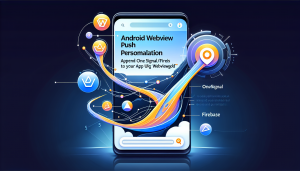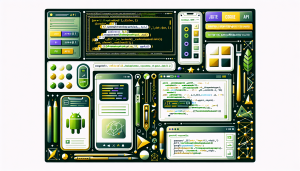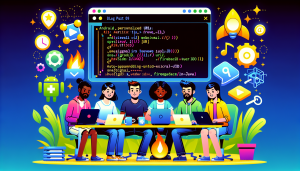
Understanding Pull-To-Refresh in Android WebView Apps
In today’s mobile-centric world, user experience plays a pivotal role in determining the success of your app. One popular feature that has become standard for modern mobile applications is the “pull-to-refresh” gesture. This intuitive action allows users to refresh content by simply pulling down on the screen—a familiar interaction that boosts usability and engagement. For developers building Android WebView apps, implementing this functionality is essential for seamless and user-friendly app experiences.
Why Pull-To-Refresh Matters for WebView-Based Apps
WebView-based apps essentially serve web content inside a native app shell, blurring the line between websites and mobile apps. However, WebView does not provide pull-to-refresh out of the box, unlike many native components. Excluding this feature can make your app feel outdated or less interactive. Enabling pull-to-refresh in WebView apps ensures that users have a fluid way to reload content, helping them stay updated without hunting for reload buttons or restarting the app.
User Experience Strategies for Pull-To-Refresh
- Visual Feedback: Use loading indicators to show when a refresh is happening.
- Performance: Make sure refreshing is quick and doesn’t cause unnecessary delays or reloads.
- Error Handling: Inform users gracefully when content fails to load after a refresh.
- Seamless Integration: Ensure the gesture does not interfere with other navigation elements or in-page scrolling.
By considering these factors, you can deliver a smooth experience, keeping users satisfied and engaged within your app.
Code Integration: Adding Pull-To-Refresh to Your Android WebView
To implement pull-to-refresh in an Android WebView app, developers typically use Android’s SwipeRefreshLayout, which can wrap around the WebView and listen for swipe-down gestures. Here’s how you can integrate it:
<androidx.swiperefreshlayout.widget.SwipeRefreshLayout
android:id=@+id/swipeContainer
android:layout_width=match_parent
android:layout_height=match_parent>
<WebView
android:id=@+id/webView
android:layout_width=match_parent
android:layout_height=match_parent />
</androidx.swiperefreshlayout.widget.SwipeRefreshLayout>
And in your Activity or Fragment:
SwipeRefreshLayout swipeRefreshLayout = findViewById(R.id.swipeContainer);
WebView webView = findViewById(R.id.webView);
swipeRefreshLayout.setOnRefreshListener(new SwipeRefreshLayout.OnRefreshListener() {
@Override
public void onRefresh() {
webView.reload();
}
});
// Stop the refresh animation once loading is complete
webView.setWebViewClient(new WebViewClient() {
@Override
public void onPageFinished(WebView view, String url) {
swipeRefreshLayout.setRefreshing(false);
}
});
This setup provides a simple yet effective way to enable pull-to-refresh, ensuring users can effortlessly reload web content from within your app.
WebViewGold: Effortless Pull-To-Refresh and App Conversion
While implementing pull-to-refresh manually is instructive, it can add complexity and maintenance overhead, especially as your app scales or needs more advanced integrations. This is where solutions like WebViewGold shine. WebViewGold offers a ready-made template for converting any website or web app into a fully functional Android application quickly and easily—with features such as pull-to-refresh, file uploads, push notifications, and more built right in. This means you can focus on your content and business logic, leaving the technical intricacies to a reliable framework.
Conclusion: Enhance Experience, Reduce Development Time
Enabling pull-to-refresh in your Android WebView app isn’t just about following trends—it’s about offering users a modern and intuitive interaction pattern they expect. Whether you decide to code the integration yourself or leverage powerful tools like WebViewGold to speed up development, implementing this small feature can lead to a significant boost in user satisfaction and retention for your app.




